-
 Bitcoin
Bitcoin $115800
-2.47% -
 Ethereum
Ethereum $3690
1.19% -
 XRP
XRP $3.105
-1.91% -
 Tether USDt
Tether USDt $0.9999
-0.07% -
 BNB
BNB $771.0
0.19% -
 Solana
Solana $179.9
-3.54% -
 USDC
USDC $0.9998
-0.03% -
 Dogecoin
Dogecoin $0.2291
-3.40% -
 TRON
TRON $0.3140
0.81% -
 Cardano
Cardano $0.8007
-1.24% -
 Hyperliquid
Hyperliquid $42.92
-0.44% -
 Stellar
Stellar $0.4212
-2.16% -
 Sui
Sui $3.730
0.03% -
 Chainlink
Chainlink $18.06
0.03% -
 Bitcoin Cash
Bitcoin Cash $546.6
5.08% -
 Hedera
Hedera $0.2438
0.55% -
 Avalanche
Avalanche $23.57
-0.81% -
 Litecoin
Litecoin $114.2
1.04% -
 UNUS SED LEO
UNUS SED LEO $8.970
-0.35% -
 Shiba Inu
Shiba Inu $0.00001363
-0.16% -
 Toncoin
Toncoin $3.136
-0.89% -
 Ethena USDe
Ethena USDe $1.001
-0.04% -
 Uniswap
Uniswap $10.30
1.42% -
 Polkadot
Polkadot $4.013
-0.06% -
 Monero
Monero $324.8
0.87% -
 Dai
Dai $0.9999
-0.04% -
 Bitget Token
Bitget Token $4.509
-1.38% -
 Pepe
Pepe $0.00001226
-2.60% -
 Aave
Aave $291.8
1.34% -
 Cronos
Cronos $0.1294
2.19%
Do I still own my crypto when I liquid stake it?
Liquid staking lets you stake crypto assets while retaining liquidity through tokenized derivatives like stETH, allowing participation in DeFi and earning rewards.
Jul 24, 2025 at 12:35 am
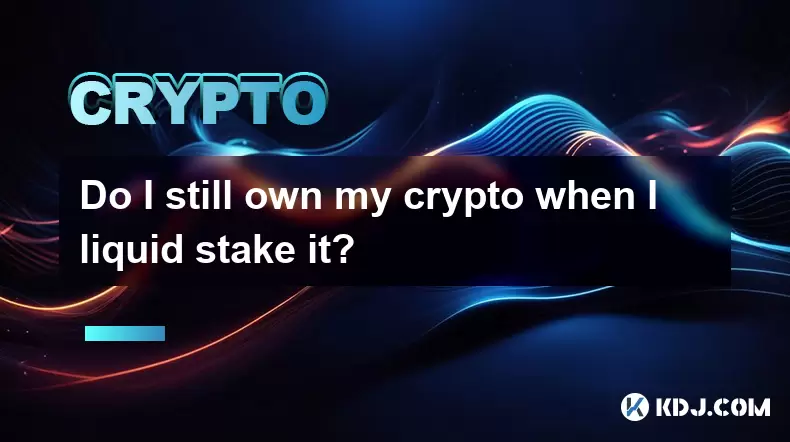
What Is Liquid Staking in Cryptocurrency?
Liquid staking is a mechanism that allows cryptocurrency holders to stake their assets while retaining liquidity. In traditional staking, users lock up their tokens to support a blockchain network's consensus mechanism, usually Proof of Stake (PoS), and in return, they earn staking rewards. However, during the staking period, those funds are illiquid, meaning they cannot be traded or used elsewhere.
Liquid staking protocols solve this issue by issuing tokenized derivatives—often called liquid tokens—that represent the staked assets. For example, if you stake ETH on a liquid staking platform like Lido Finance, you receive stETH in return. These tokens can be traded, transferred, or used in DeFi protocols for yield farming or lending. This means you still own your crypto in a derivative form, even though the original tokens are staked.
How Does Liquid Staking Work?
When you choose to liquid stake, you deposit your native cryptocurrency—such as ETH, SOL, or ATOM—into a smart contract managed by a liquid staking provider. In return, you receive a liquid token that mirrors the value of your staked asset plus accrued rewards.
- The staking provider pools your assets with others and delegates them to validators.
- Validators perform the staking duties and earn rewards.
- These rewards are periodically distributed to all holders of the liquid token.
- The liquid token can be used in decentralized exchanges (DEXs), lending platforms, or yield aggregators.
The liquid token is pegged to the value of the underlying asset, although it may trade at a slight premium or discount on secondary markets. This process allows users to retain exposure to their staked assets while enabling them to participate in other financial activities.
Do You Retain Ownership of Your Original Crypto?
Yes, when you liquid stake, you do not lose ownership of your crypto. Instead, your original tokens are locked in a smart contract or managed by a decentralized staking pool, and you receive a representative token in return. This representative token, such as stETH or bLuna, gives you the ability to interact with DeFi while still earning staking rewards.
However, it’s important to understand that:
- The original asset is not freely transferable until it is unstaked.
- You can only access the original crypto after unstaking or swapping the liquid token.
- Some networks require a cooling-off period before staked assets can be withdrawn.
Therefore, while you technically own your crypto, it is not directly accessible until you go through the unstaking or redemption process.
Can Liquid Staking Tokens Be Redeemed for the Original Crypto?
Yes, liquid staking tokens can be redeemed for the original cryptocurrency, but the process varies depending on the platform and blockchain. Most liquid staking platforms allow users to either:
- Swap the liquid token for the native token on a decentralized exchange.
- Wait for the platform to offer direct unstaking functionality, which allows users to redeem their original crypto.
For example:
- Lido Finance allows users to swap stETH for ETH on platforms like Curve Finance or Balancer.
- Some newer platforms are integrating instant unstaking, which removes the need to wait for the network’s unstaking period.
It’s important to note that swapping may involve slippage or fees, and market conditions can affect the exchange rate between the liquid token and the native token. Additionally, impermanent loss may occur if you provide liquidity with these tokens.
What Are the Risks of Liquid Staking?
While liquid staking provides flexibility and utility, it comes with several risks:
- Smart contract risk: Liquid staking relies on complex smart contracts, which may have vulnerabilities or be exploited.
- Centralization risk: Some liquid staking providers control a large portion of the network’s staked assets, which could pose decentralization concerns.
- Liquid token volatility: The value of the liquid token may diverge from the native token due to market forces or platform-specific issues.
- Slashing risk: If the validator misbehaves, the staked assets—and by extension, the liquid tokens—can be slashed, leading to a loss in value.
Users should carefully assess the reputation, transparency, and security of the liquid staking provider before participating.
How to Liquid Stake Your Crypto Step-by-Step
If you're interested in liquid staking, follow these steps carefully:
- Connect your wallet (e.g., MetaMask, Trust Wallet) to a liquid staking platform like Lido, Rocket Pool, or Stader Labs.
- Select the cryptocurrency you wish to stake (e.g., ETH, SOL, ATOM).
- Approve the transaction and send the tokens to the platform's smart contract.
- Confirm the transaction and wait for the receipt of your liquid staking tokens (e.g., stETH, rETH, bLuna).
- Optionally, use these tokens in DeFi protocols for additional yield.
Each platform may have different interfaces and steps, so it’s essential to follow their on-chain instructions precisely.
Frequently Asked Questions
Q: Can I unstake my crypto anytime with liquid staking?
A: You can swap your liquid token for the native token anytime on decentralized exchanges. However, direct unstaking may require waiting for the platform to enable withdrawals or network-specific unstaking periods.
Q: Do I still earn staking rewards with liquid staking?
A: Yes, liquid staking tokens accrue staking rewards automatically. The value of the token increases over time to reflect the rewards earned by the staked assets.
Q: Is liquid staking safe?
A: It depends on the platform. Choose well-audited, decentralized, and transparent liquid staking providers. Always be aware of smart contract risks and validator slashing possibilities.
Q: Can I use liquid staking tokens as collateral in DeFi loans?
A: Yes, many DeFi platforms accept liquid staking tokens as collateral. However, not all protocols recognize them, so check the collateral eligibility before depositing.
Disclaimer:info@kdj.com
The information provided is not trading advice. kdj.com does not assume any responsibility for any investments made based on the information provided in this article. Cryptocurrencies are highly volatile and it is highly recommended that you invest with caution after thorough research!
If you believe that the content used on this website infringes your copyright, please contact us immediately (info@kdj.com) and we will delete it promptly.
- Pump, Bonk, Buyback: A Wild Ride in Crypto Town!
- 2025-07-25 19:10:12
- Punisher Coin, Dogecoin, Shiba Inu: Meme Coin Mania in the 2025 Crypto Landscape
- 2025-07-25 19:10:12
- Celestia's Token Control: Buyback & Staking Overhaul in Focus
- 2025-07-25 19:50:11
- Altcoins, Bitcoin, and Crypto Coins: What's Hot in the NYC Crypto Scene?
- 2025-07-25 19:55:52
- Litecoin Price Breakout Imminent? Rally Potential Explored!
- 2025-07-25 17:30:12
- Ether ETFs Surge, Bitcoin Wobbles: Is an ETH Breakout Imminent?
- 2025-07-25 16:50:12
Related knowledge
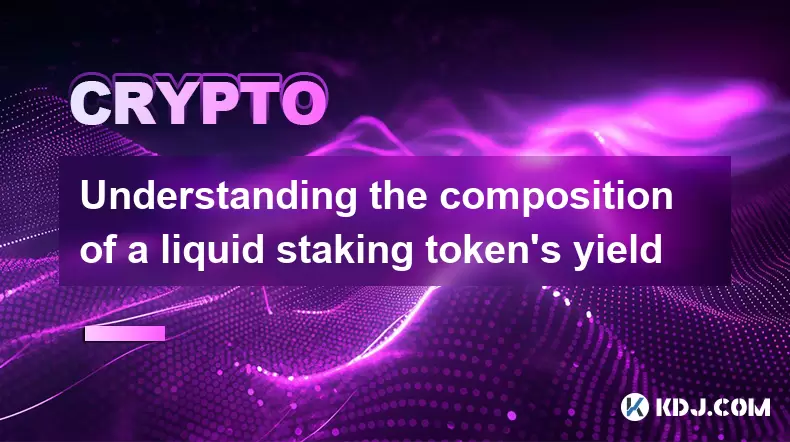
Understanding the composition of a liquid staking token's yield
Jul 20,2025 at 09:07am
What Is a Liquid Staking Token?A liquid staking token is a representative asset issued to users who stake their native cryptocurrency on a proof-of-st...
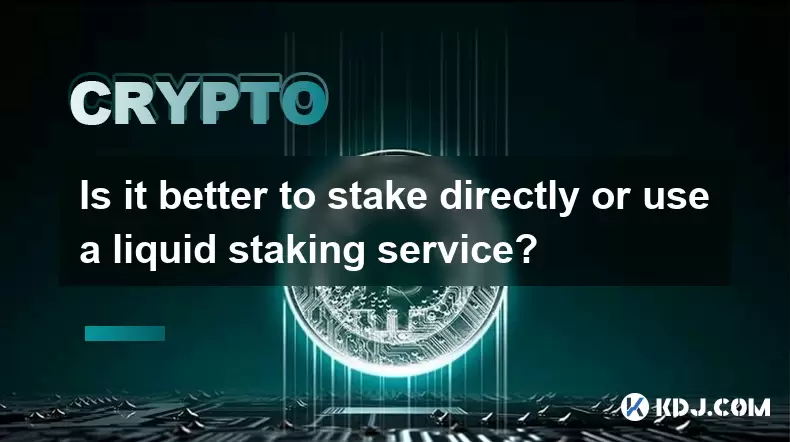
Is it better to stake directly or use a liquid staking service?
Jul 22,2025 at 08:21pm
Understanding the Basics of StakingStaking in the context of blockchain and cryptocurrency refers to the process of locking up digital assets to suppo...

What to do during an LST depeg event
Jul 20,2025 at 04:57pm
Understanding LST Depeg EventsAn LST (Liquid Staking Token) depeg event occurs when the token, which is typically pegged to the value of the underlyin...
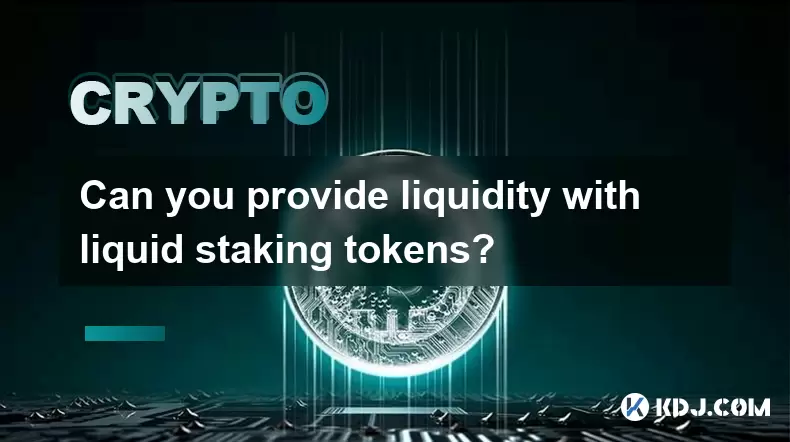
Can you provide liquidity with liquid staking tokens?
Jul 22,2025 at 10:22am
Understanding Liquid Staking TokensLiquid staking tokens (LSTs) are derivative tokens that represent staked assets on a proof-of-stake (PoS) blockchai...

What are the best wallets for storing LSTs?
Jul 21,2025 at 03:14pm
Understanding LSTs and the Need for Secure StorageLSTs, or Liquid Staking Tokens, are derivative tokens representing staked assets on a blockchain. Wh...
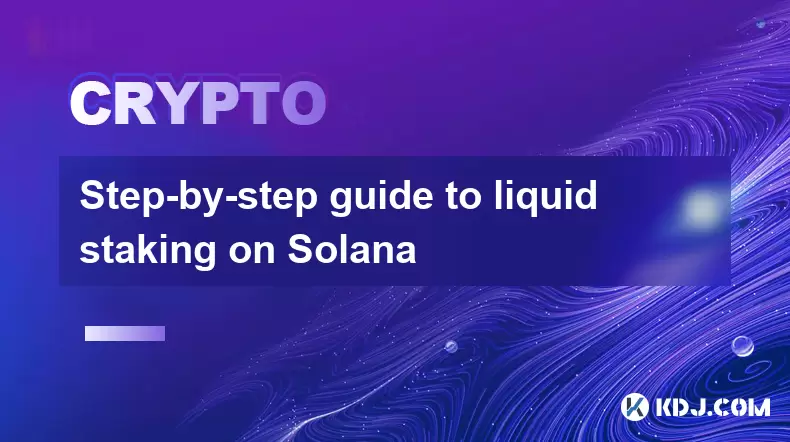
Step-by-step guide to liquid staking on Solana
Jul 20,2025 at 06:42am
What is Liquid Staking on Solana?Liquid staking is a mechanism that allows users to stake their cryptocurrency while retaining liquidity through the i...

Understanding the composition of a liquid staking token's yield
Jul 20,2025 at 09:07am
What Is a Liquid Staking Token?A liquid staking token is a representative asset issued to users who stake their native cryptocurrency on a proof-of-st...

Is it better to stake directly or use a liquid staking service?
Jul 22,2025 at 08:21pm
Understanding the Basics of StakingStaking in the context of blockchain and cryptocurrency refers to the process of locking up digital assets to suppo...

What to do during an LST depeg event
Jul 20,2025 at 04:57pm
Understanding LST Depeg EventsAn LST (Liquid Staking Token) depeg event occurs when the token, which is typically pegged to the value of the underlyin...

Can you provide liquidity with liquid staking tokens?
Jul 22,2025 at 10:22am
Understanding Liquid Staking TokensLiquid staking tokens (LSTs) are derivative tokens that represent staked assets on a proof-of-stake (PoS) blockchai...

What are the best wallets for storing LSTs?
Jul 21,2025 at 03:14pm
Understanding LSTs and the Need for Secure StorageLSTs, or Liquid Staking Tokens, are derivative tokens representing staked assets on a blockchain. Wh...

Step-by-step guide to liquid staking on Solana
Jul 20,2025 at 06:42am
What is Liquid Staking on Solana?Liquid staking is a mechanism that allows users to stake their cryptocurrency while retaining liquidity through the i...
See all articles

























































































